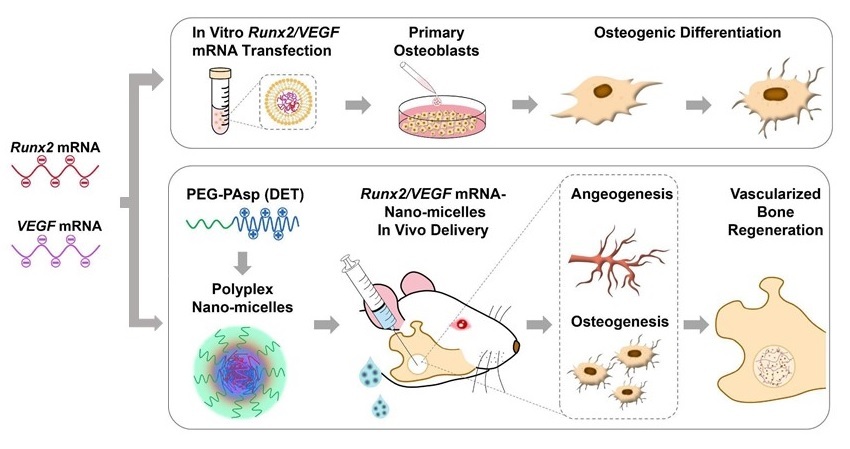A novel bone regeneration technique with clinical potential
June 23, 2023
Researchers from Tokyo Medical and Dental University (TMDU) identify a promising way to improve bone repair with important clinical applications
Tokyo, Japan – Although bones have the ability to regenerate and repair themselves, they are generally unable to do so when the injury is larger than a small break or chip. In a study just published in Inflammation and Regeneration, Japanese researchers have developed a technique for improving bone regeneration over large areas in rats—and their findings may translate well to clinical settings.
As most of us know from experience, bones can repair themselves after a minor break or fracture, leaving us as good as new. Unfortunately, after a larger injury—or if a lot of bone needs to be removed because of something like a tumor—bones often don’t heal well. Although there are many different ways to improve bone repair over larger areas in animal models, very few techniques translate well into the clinic.
A research team from Tokyo Medical and Dental University (TMDU) decided to tackle this challenge using vascular endothelial growth factor (VEGF), which improves regeneration of the blood circulatory system, and Runt-related transcription factor 2 (Runx2), which is important for bone regeneration.
“We had already used these two factors to improve bone regeneration in mice in a previous study,” explains senior author of the study Keiji Itaka. “But we injected DNA, which can insert itself into the body’s genetic information, rather than RNA, which cannot; this meant that our findings had little clinical relevance because of the risks involved.”
In their new study, the researchers used messenger RNA encoding VEGF and Runx2. They first demonstrated that the combination of these two RNAs led to a better regenerative response in bone cells than each RNA alone. Next, they injected the RNA combination into rats with large jawbone lesions. After three weekly injections, the jawbones of these mice were almost completely healed, unlike those of control mice. Importantly, their technique may have similar results in a clinical setting and is likely to be safe for use in humans.
“Our technique is especially promising for clinical use because of the coating that we used for the VEGF and Runx2 RNA,” explains Maorui Zhang, lead author of the study. “Many previous studies have used lipid nanoparticles, but this coating leads to inflammation, limiting its clinical use. We used a coating that we had developed previously, known as polyplex nanomicelles, which leads to very little inflammation.”
Given that large bone injuries can be difficult to repair in the clinic, the findings of this study bring new hope to patients. The use of combinations of RNA coated in polyplex nanomicelles is potentially an effective, low-risk technique for improving bone repair in humans and has many promising clinical applications.

Bone regeneration using mRNA medicines
Bone regeneration was enhanced by administering mRNAs encoding Runx2 and VEGF into the bone defect on rat mandible bone.
###
The article, “Enhancement of bone regeneration by coadministration of angiogenic and osteogenic factors using messenger RNA,” was published in Inflammation and Regeneration at DOI: 10.1186/s41232-023-00285-3
Summary
Researchers from Tokyo Medical and Dental University (TMDU) have found that bone repair can be improved in mice with large bone lesions by injecting a combination of RNA encoding two different proteins. Their technique is a promising candidate for clinical use. This study provides new hope for patients with large bone lesions as a result of injury or surgery, in whom bone repair is often difficult to achieve.
Journal Article
JOURNAL:Inflammation and Regeneration
TITLE:Enhancement of bone regeneration by coadministration of angiogenic and osteogenic factors using messenger RNA
DOI:https://doi.org/10.1186/s41232-023-00285-3
TITLE:Enhancement of bone regeneration by coadministration of angiogenic and osteogenic factors using messenger RNA
DOI:https://doi.org/10.1186/s41232-023-00285-3
Correspondence to
Keiji ITAKA,Ph.D.,Professor
Department of Biofunction Research,
Institute of Biomaterials and Bioengineering,
Tokyo Medical and Dental University(TMDU)
E-mail:itaka.bif(at)tmd.ac.jp
*Please change (at) in e-mail addresses to @ on sending your e-mail to contact personnels.

